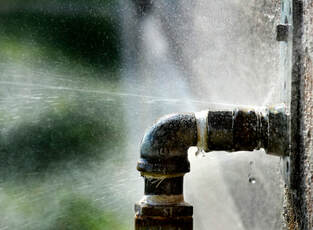They are making several great annotation on the subject of Finding hidden leaks as a whole in the article down below.

Early discovery of leaking water lines can minimize a potential catastrophe. Some little water leaks may not be noticeable.
1. Examine the Water Meter
Every home has a water meter. Checking it is a guaranteed manner in which aids you uncover leaks. For starters, turn off all the water sources. Make sure no person will certainly purge, make use of the tap, shower, run the cleaning device or dishwashing machine. From there, most likely to the meter as well as watch if it will alter. Because nobody is using it, there should be no movements. If it moves, that shows a fast-moving leakage. If you discover no modifications, wait an hour or two as well as inspect back once more. This means you may have a sluggish leak that might even be underground.
2. Inspect Water Usage
Evaluate your water bills and also track your water usage. As the one paying it, you ought to discover if there are any kind of disparities. If you detect sudden changes, in spite of your consumption coinciding, it indicates that you have leaks in your plumbing system. Bear in mind, your water bill need to fall under the very same range each month. A sudden spike in your expense shows a fast-moving leak.
A constant rise every month, also with the very same behaviors, reveals you have a sluggish leak that's also slowly escalating. Call a plumber to extensively examine your residential or commercial property, especially if you really feel a cozy area on your floor with piping below.
3. Do a Food Coloring Test
30% comes from toilets when it comes to water intake. Test to see if they are running properly. Decrease specks of food shade in the tank and wait 10 mins. There's a leak in between the tank as well as dish if the color in some way infiltrates your bowl during that time without flushing.
4. Asses Outside Lines
Do not fail to remember to inspect your exterior water lines too. Examination spigots by connecting a yard hose pipe. Should water leak out of the link, you have a loose rubber gasket. Replace this as well as ensure all links are limited. If you've got a sprinkler system, it will help get it properly analyzed as well as maintained every year. One small leakage can waste tons of water and also increase your water expense.
5. Examine and also Examine the Scenario
Home owners should make it a routine to examine under the sink counters as well as even inside closets for any bad odor or mold growth. These two red flags suggest a leakage so punctual focus is required. Doing regular assessments, even bi-annually, can save you from a major problem.
Examine for stainings as well as weakening as many pipes and home appliances have a life expectancy. If you think dripping water lines in your plumbing system, do not wait for it to rise.
Early discovery of dripping water lines can minimize a possible catastrophe. Some tiny water leaks might not be visible. Examining it is a surefire means that helps you find leakages. One tiny leakage can waste heaps of water and surge your water costs.
If you think dripping water lines in your plumbing system, do not wait for it to escalate.
How to Know If Your Home Has a Hidden Leak
Water Meter Reveals Inexplicable Water Usage
If you’d like to test whether or not there’s a leak somewhere in your home, you can do this using your water meter. Here is how to conduct the test:
Don’t use any water in your home for at least 30 minutes; this also means not turning on faucets or water-using appliances.
Go outside, and check your water meter for activity.
If your water meter shows that there was activity, even though no one was using any water, this proves that there is a leak in your home.Visible Mold or Mildew Growth
Leaks behind walls create moist, dark environments that allow mold and mildew to grow and thrive. Eventually, you might see mold growth forming on the wall closest to a hidden leak.
If mold is growing in an area that receives a high amount of moisture, such as a bathroom, it may simply be an indication that better ventilation is needed. However, if you see mold growth on a wall or the ceiling in an area where you would not expect, you probably have a hidden leak.
Musty, Mildew Odor
Sometimes you might not be able to see the mold or mildew that is growing as a result of a leak. However, the smell can give the problem away just as easily. If you catch a whiff of something musty, there’s a good chance that old water is collecting somewhere in your home that you can’t see.
Stained/Warped Walls, Ceilings, or Floors
When your home soaks up water, a variety of red flags can become visible, including ceiling stains, bubbling drywall, warped walls, and sagging floors. While these issues can be caused by excess humidity, they can also be signs that a pipe or plumbing connection has started leaking behind your walls.
Inexplicably High Water Bill
After a while, you get a general sense for what your water bill should be. If you own a pool or sprinkler system, your bill will tend to be higher during summer. However, if you receive a water bill that seems especially high, and you can’t figure out what caused it, then you may have a hidden leak somewhere that’s increasing your bill.
https://www.plumbingjoint.com/blog/2019/july/how-to-know-if-your-home-has-a-hidden-leak/

We were introduced to that article about Hacks to detect leaks through an acquaintance on a different web blog. Remember to take the opportunity to share this blog entry if you liked it. Thank you for going through it.